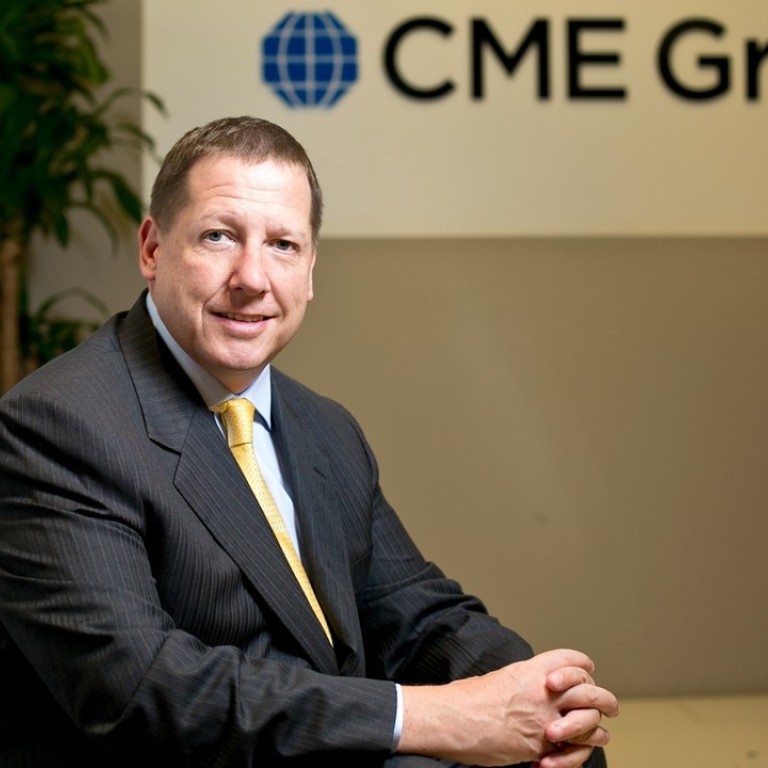
CME Group’s focus on Asia as overseas investors drive up volumes during regional trading hours
Christopher Fix, managing director for Asia at CME Group, says investors are shifting towards Asia, laying off risks and widening their portfolios
CME Group, the world’s largest futures exchange operator, is seeing increased global trade during Asian market hours, heightened by overseas investors hedging rising geopolitical risks.
With greater global market liquidity since the 2008 financial crisis, overseas investors from the US and Europe are using the “8-till-8” Asian trading time zone to shift their risk as tensions rise around the world, making the region crucial to their international growth strategy, Christopher Fix, managing director for Asia at CME Group, said in an interview.

“Markets are much more deeply globally entrenched than 10 years ago. When there are not enough places to move your risk it creates gaps and pockets that really exacerbate any crisis scenario,” said Singapore-based Fix.
Now, “there are global liquidity pools, an ability to go between time zones and geographies that didn’t exist 10 years ago.”
Rising global tensions such as the US and China trade war, Britain negotiating a Brexit deal, interest rate hikes in the US and emerging market volatility are playing on market sentiment.
Investors, he said, are shifting towards Asia, laying off risks and widening their portfolios.
“Things like Brexit, the US elections, or the trade war: you’ve got so many things driving the news cycles and it is really playing out in this 8-till-8 time zone.”
In the first half of 2018, 18 per cent or 3.6 million lots of the group’s total daily global trading volume happened during the Asian time zone, noted as 8am to 8pm Hong Kong time. This is already more than the 17 per cent for the whole of 2017 and 16 per cent in 2016.

Of those 3.6 million lots, 900,000 came from Asia. While participation from Asian-based investors has jumped, from 664,000 during 2017 and 630,000 in 2016, “the bigger slices are coming from overseas,” namely London and the US, said Fix. Exact figures from overseas were not available.
The group only started tracking Asian hours data when Fix joined in 2015, after serving as chief executive officer at Dubai Mercantile Exchange.
Fix said Asian investors are building their portfolios and leaning towards gold to lay off risk and spread their positions.
Gold is the largest and most heavily traded product on the CME, and in the first half of this year 36 per cent of the global trade in the precious metal was during Asian hours, up from 31 per cent in 2017 and 32 per cent in 2016.

“Gold is widely appreciated as the doomsday hedge and that has a lot to play into it,” he said.
The Chicago-based group’s recent expansion in the region has been evident. After opening in Sydney last October they now boast seven Asian offices, more than any other exchange group. In the same month they launched the first yen-denominated futures contract outside Japan, for investors wanting exposure to the world’s third largest economy.
While CME does not have plans for further regional expansion at the moment – they are instead focusing on what would be their largest overseas acquisition, of London-listed NEX Group – any new products would be Asia-oriented.
“If we think about doing something, it will be much more geared towards what we think the Asian customer base needs,” said Fix.

